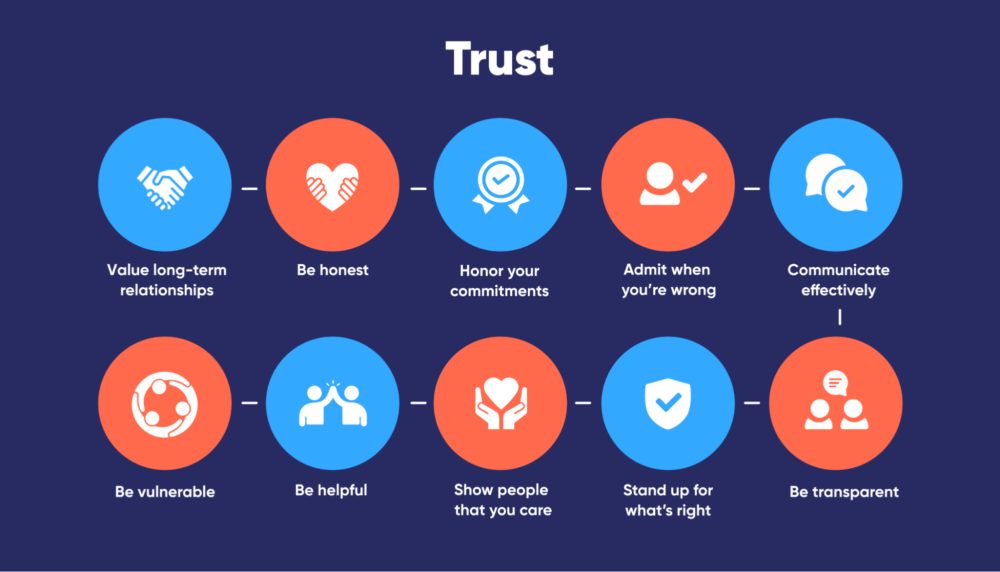Trust is the backbone of any successful workplace. Yet, many teams grapple with a pervasive lack of trust that hinders collaboration and stifles innovation. Have you ever wondered how some organizations seem to thrive under pressure while others crumble? The answer often lies in one key element: vulnerability-based trust. This dynamic approach to building trust goes beyond traditional notions, embracing openness and authenticity among team members. As we dive into the world of vulnerability-based trust, you’ll discover its profound impact on teamwork and productivity, transforming not just how individuals interact but also how they achieve collective goals. Let’s explore why fostering this type of trust can be a game-changer for your organization.
What is vulnerability based trust?
Vulnerability-based trust is a deeper level of trust that hinges on openness and honesty within teams. Unlike traditional trust, which often focuses on reliability and competence, vulnerability-based trust encourages individuals to share their fears, mistakes, and uncertainties.
This type of trust creates an environment where team members feel safe expressing themselves without fear of judgment. When people are willing to be vulnerable, they foster genuine connections with one another.
At its core, vulnerability-based trust allows for candid conversations about challenges and setbacks. It empowers employees to seek help or offer support when needed.
By embracing vulnerability in the workplace, teams can cultivate stronger relationships built on empathy and understanding. This approach not only enhances collaboration but also drives innovation by encouraging new ideas without the fear of failure.
How does it differ from traditional trust?
Vulnerability-based trust shifts the focus from mere reliability to authentic connection. Traditional trust often relies on predictable behaviors and competencies. It’s about knowing that someone will complete their tasks without fail.
On the other hand, vulnerability-based trust encourages openness and transparency among team members. Here, individuals share not only their strengths but also their fears and weaknesses. This depth of sharing fosters deeper connections.
In a traditional framework, people might avoid showing any signs of weakness for fear of judgment or repercussion. Vulnerability-based trust flips this notion by creating a safe space where expressing challenges is welcomed.
This difference significantly impacts team dynamics. Teams built on vulnerability can address conflicts openly while aligning goals effectively—leading to enhanced collaboration over time.
The importance of trust in the workplace
Trust is the foundation of any successful workplace. It fosters open communication and collaboration among team members, allowing for a free exchange of ideas.
When trust is present, employees feel safe to express their opinions without fear of judgment. This encourages creativity and innovation.
On the other hand, a lack of trust can lead to misunderstandings and conflict. Team members may hold back thoughts or avoid sharing feedback, which stifles growth.
Moreover, trust enhances employee engagement. Individuals who believe in their colleagues are more likely to invest themselves fully in their work.
A trusting environment also promotes resilience during challenging times. Teams that support one another navigate obstacles more effectively than those plagued by distrust.
Prioritizing trust improves morale and productivity across the board. It’s essential for fostering strong relationships within any organization.
Benefits of vulnerability based trust
Vulnerability-based trust fosters deeper connections among team members. When individuals feel safe to share their thoughts and feelings, it encourages open dialogue.
This atmosphere leads to enhanced collaboration. Team members are more likely to contribute ideas without fear of judgment. Creativity thrives when everyone feels heard.
Another significant benefit is increased accountability. When people own up to mistakes or weaknesses, the entire team can learn and grow together. This transparency builds a stronger foundation for future projects.
Emotional safety also reduces stress in the workplace. Employees who trust one another experience less anxiety about competition and conflict. They focus more on collective goals rather than personal agendas.
Vulnerability nurtures empathy within teams. Understanding each other’s struggles creates bonds that enrich work relationships, ultimately leading to higher job satisfaction and retention rates.
Creating a culture of vulnerability based trust
Creating a culture of vulnerability-based trust starts with leadership. Leaders must model openness and authenticity. When they share their own challenges, it encourages team members to do the same.
Regular check-ins can foster this environment. These meetings shouldn’t solely focus on tasks but also provide a space for personal sharing. This builds connections among team members.
Encourage feedback and active listening in every interaction. When employees feel heard, they are more likely to express themselves freely without fear of judgment.
Celebrate moments of vulnerability within teams. Recognizing these instances reinforces the idea that being open is valued and essential for growth.
Training workshops focused on emotional intelligence can further enhance understanding of each other’s perspectives, paving the way toward deeper relationships built on trust rather than mere compliance or obligation.
Implementing vulnerability based trust in your workplace
Implementing vulnerability-based trust starts with leadership. Leaders must model openness and authenticity. When they share their own challenges, it encourages others to do the same.
Next, create safe spaces for discussions. Regular team meetings can facilitate this environment. Encourage team members to express ideas and concerns without fear of judgment.
Training sessions focused on emotional intelligence can also be beneficial. These workshops enhance communication skills and help build empathy among colleagues.
Recognize efforts made towards being vulnerable. Celebrate small wins where team members share experiences or seek help from one another.
Provide ongoing support through coaching or mentoring programs. This ensures that employees feel valued and understood in their journey toward building deeper connections within the workplace.
Conclusion
Trust is a fundamental pillar in any workplace. Yet, many organizations grapple with a lack of trust among team members. Embracing vulnerability-based trust can be the antidote to this challenge.
By allowing individuals to express their fears and insecurities openly, teams foster deeper connections. This openness leads to authentic communication and collaboration, which are vital for effective team building. When employees feel safe sharing their thoughts without judgment, creativity flourishes.
The transition may require effort but is beneficial in the long run. It creates an environment where everyone feels valued and included, ultimately driving better performance and job satisfaction.
Cultivating vulnerability-based trust isn’t just an ideal—it’s a strategic choice that pays dividends over time. The investment in people leads to enhanced teamwork, increased productivity, and a more positive workplace culture overall. As leaders prioritize this approach, they lay the groundwork for stronger relationships within their teams—and that’s something worth striving for in every organization.




